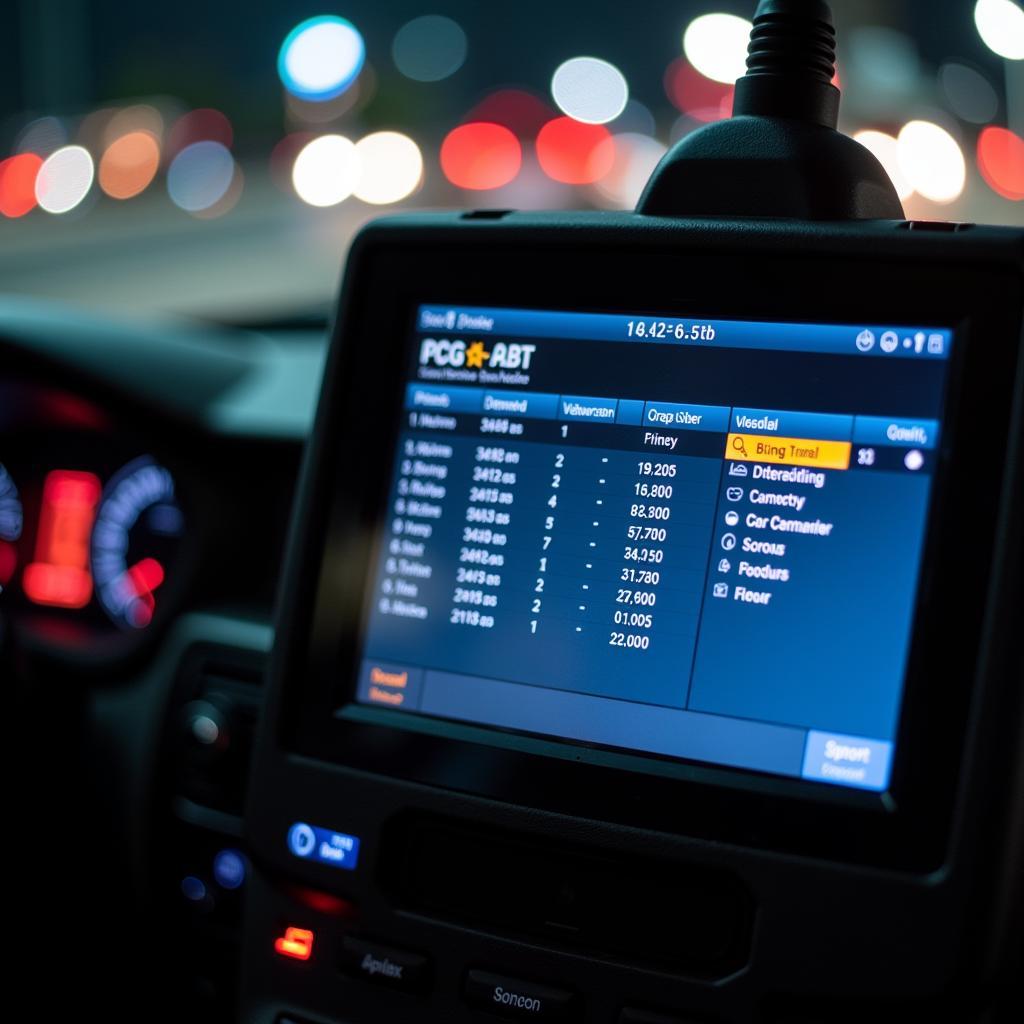Choosing the best car diagnostic computer can feel overwhelming with the wide range of options available. Whether you’re a seasoned mechanic or a car enthusiast looking to troubleshoot your own vehicle, this guide will help you navigate the market and find the perfect diagnostic tool to meet your needs and budget.
 Best Car Diagnostic Computer Options
Best Car Diagnostic Computer Options
Factors to Consider When Choosing a Car Diagnostic Computer
Before diving into specific products, let’s explore the key factors you should consider:
1. Your Skill Level and Intended Use
- DIYer: For basic diagnostics like reading and clearing check engine lights, a simpler OBD2 code reader might suffice.
- Enthusiast: If you’re more hands-on and want to delve deeper into your car’s systems, a mid-range scanner with live data streaming and some advanced functions would be suitable.
- Professional: Mechanics and technicians require high-end diagnostic computers with extensive vehicle coverage, bi-directional controls, and coding capabilities.
2. Vehicle Compatibility
Ensure the diagnostic computer supports your vehicle’s make, model, and year. While most scanners are compatible with standard OBD2 protocols found in cars from 1996 onwards, you might need specific software or adapters for older vehicles or certain makes and models.
3. Software Features
Diagnostic computers come equipped with various software features, including:
- Code Reading and Clearing: This essential feature allows you to read and clear diagnostic trouble codes (DTCs) stored in your car’s computer.
- Live Data Streaming: View real-time data from various sensors, allowing you to monitor engine performance, transmission behavior, and other parameters.
- Bi-Directional Controls: This feature allows you to command specific components, like actuators and solenoids, to test their functionality.
- Coding and Programming: Advanced diagnostic computers allow for module coding, which is essential for tasks like replacing ECUs or making modifications.
4. User Interface and Display
Choose a diagnostic computer with a user-friendly interface and a clear, easy-to-read display. Consider factors like screen size, button layout, and menu navigation.
5. Budget
Car diagnostic computers range from affordable code readers to expensive professional-grade tools. Determine your budget and prioritize features that align with your needs and intended use.
 Mechanic Using Diagnostic Computer
Mechanic Using Diagnostic Computer
Types of Car Diagnostic Computers
1. OBD2 Code Readers
These entry-level devices are the most affordable and primarily focus on reading and clearing DTCs. Some basic models might display limited live data but lack advanced functionalities. They are a suitable option for DIYers who want to diagnose simple engine-related issues.
2. Mid-Range Scanners
These scanners offer a wider range of features, including live data streaming, graphing capabilities, and some bi-directional controls. They cater to car enthusiasts and DIYers seeking more in-depth diagnostics and troubleshooting.
3. High-End Diagnostic Computers
Professional mechanics and technicians rely on high-end diagnostic computers that provide comprehensive vehicle coverage, extensive functionalities like coding and programming, and advanced software features. These tools often come with a hefty price tag but offer unparalleled diagnostic power.
Tips for Using a Car Diagnostic Computer
- Always consult your vehicle’s repair manual for specific instructions and safety precautions.
- Properly connect the diagnostic computer to the vehicle’s OBD2 port, usually located under the dashboard on the driver’s side.
- Accurately interpret DTCs and refer to reliable sources for their meanings and potential causes.
- Exercise caution when using bi-directional controls, as improper commands can potentially damage vehicle components.
Choosing the Best Car Diagnostic Computer for You
The best car diagnostic computer for you depends on your specific needs, budget, and skill level.
Here are some recommendations based on common user profiles:
- DIYer on a Budget: Diagnostic code car for basic code reading and clearing.
- Car Enthusiast: A mid-range scanner with live data and some bi-directional control, like the Autel MaxiCOM MK808.
- Professional Mechanic: A high-end diagnostic computer like the Snap-on Solus Edge or the Launch X431.
 Car Diagnostic Computer Software Interface
Car Diagnostic Computer Software Interface
Conclusion
Investing in the best car diagnostic computer for your money empowers you to take control of your vehicle’s maintenance and repairs. By understanding your needs, researching the available options, and considering the factors outlined in this guide, you can make an informed decision and choose a diagnostic tool that will serve you well for years to come.
FAQs
Q: What is the OBD2 port, and where can I find it?
A: The OBD2 (On-Board Diagnostics) port is a standardized connector found in most vehicles manufactured after 1996. It allows diagnostic tools to communicate with the vehicle’s computer and access data. The OBD2 port is typically located under the dashboard on the driver’s side.
Q: Can I use a car diagnostic computer to diagnose problems with my ABS or airbag systems?
A: While basic OBD2 code readers might provide limited access to ABS and airbag systems, more advanced diagnostic computers offer comprehensive coverage for these and other vehicle systems.
Q: Do I need a separate diagnostic computer for different car makes and models?
A: Many diagnostic computers on the market offer wide vehicle coverage, supporting various makes and models. However, some tools might require specific software or adapters for certain vehicles.
Q: What is the difference between live data and freeze frame data?
A: Live data shows real-time information from various sensors, providing a dynamic view of the vehicle’s operation. Freeze frame data captures a snapshot of sensor readings at the time a fault code was stored, offering valuable insights into the conditions leading up to the issue.
Have other questions about car diagnostics or need help finding the right tool for your needs?
Contact our team of experts at WhatsApp: +1(641)206-8880 or Email: [email protected]. We’re available 24/7 to provide personalized assistance. You can also check out our related articles on diagnostic check car and diagnostic test tool for cars for more information.

Leave a Reply